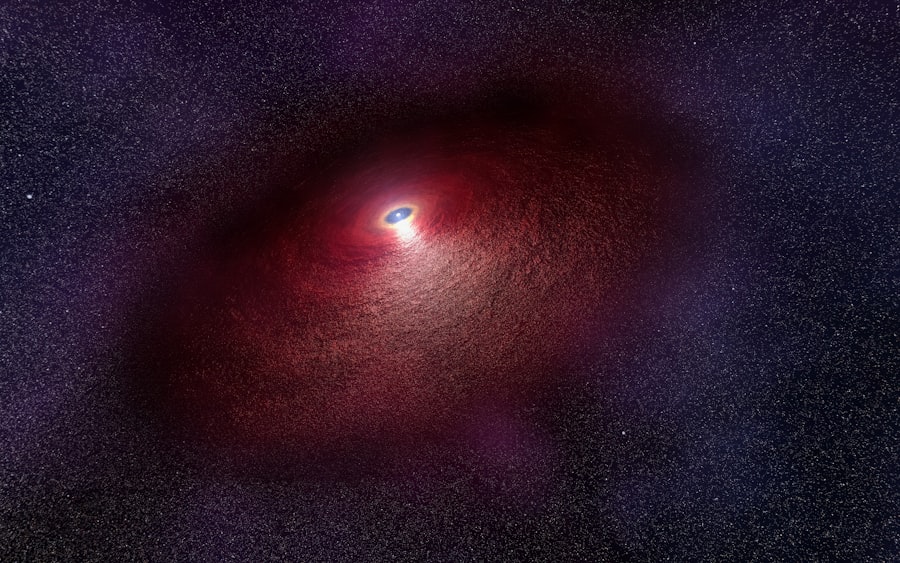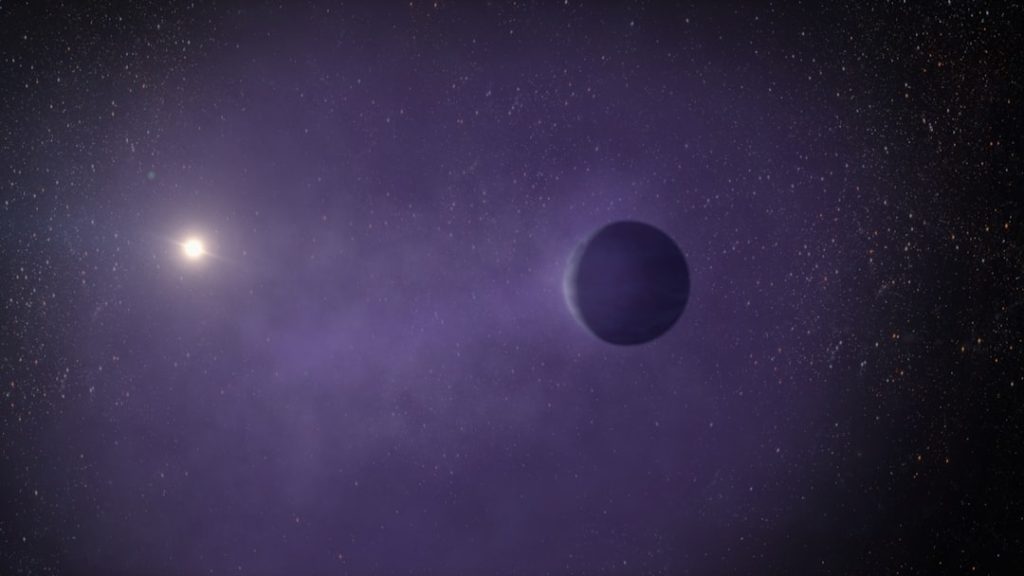The Hubble Space Telescope, often mistakenly referred to as the Hubble Space Station, is one of the most significant scientific instruments ever created. Launched into low Earth orbit on April 24, 1990, aboard the Space Shuttle Discovery, Hubble has provided humanity with an unprecedented view of the universe. Unlike ground-based telescopes, which are hindered by atmospheric distortion and light pollution, Hubble operates above the Earth’s atmosphere, allowing it to capture images with remarkable clarity and detail.
This unique vantage point has enabled astronomers to observe celestial phenomena that were previously beyond reach, fundamentally altering our understanding of the cosmos. Hubble’s design is a marvel of engineering, featuring a 2.4-meter primary mirror and a suite of advanced instruments that can observe in ultraviolet, visible, and near-infrared wavelengths. Its ability to conduct long-term observations of distant galaxies, nebulae, and other astronomical objects has made it an invaluable tool for researchers.
The telescope’s contributions extend beyond mere observation; it has also played a crucial role in testing and refining theories in cosmology and astrophysics. As we delve into the history and development of Hubble, we will uncover the challenges faced during its inception and the groundbreaking discoveries that have emerged from its observations.
Key Takeaways
- The Hubble Space Station is a powerful telescope orbiting Earth, providing valuable insights into the universe.
- Launched in 1990, the Hubble Space Station has undergone several servicing missions to upgrade its instruments and extend its lifespan.
- The Hubble Space Station has made significant contributions to our understanding of the universe, including the age and expansion rate of the universe, and the discovery of exoplanets.
- The Hubble Space Station has revolutionized astronomy and astrophysics, leading to groundbreaking discoveries and new areas of research.
- The future of the Hubble Space Station is uncertain, with plans for its eventual decommissioning and the development of new space telescopes.
History and Development of the Hubble Space Station
The journey to the Hubble Space Telescope began in the 1940s when astronomers recognized the limitations of ground-based observations. The idea of placing a telescope in space gained traction over the decades, culminating in a formal proposal by NASA in the 1970s. The project faced numerous hurdles, including budget constraints and technical challenges.
However, the vision of a space-based observatory persisted, leading to the establishment of the Hubble Space Telescope program in 1977. The telescope was named after Edwin Hubble, an American astronomer whose work on galaxy classification and the expansion of the universe laid the groundwork for modern cosmology. Construction of Hubble began in earnest in the early 1980s at NASA’s Goddard Space Flight Center.
The telescope was designed to be serviced and upgraded by astronauts, a novel concept at the time. This feature would allow Hubble to remain at the forefront of astronomical research for decades. After years of development and testing, Hubble was finally launched aboard the Space Shuttle Discovery in 1990.
However, shortly after its deployment, it became apparent that there was a significant flaw in its primary mirror, which had been ground to the wrong specifications. This defect resulted in distorted images that initially cast doubt on the mission’s success.
Key Discoveries and Contributions of the Hubble Space Station

Despite its rocky start, Hubble quickly redeemed itself through a series of groundbreaking discoveries that have reshaped our understanding of the universe. One of its most significant contributions was the measurement of the rate of expansion of the universe. By observing distant supernovae and their redshifts, astronomers were able to determine that the universe is not only expanding but that this expansion is accelerating.
This revelation led to the concept of dark energy, a mysterious force that constitutes approximately 68% of the universe and drives its accelerated expansion. Hubble has also provided stunning images of celestial phenomena that have captivated both scientists and the public alike. The iconic Pillars of Creation photograph taken in the Eagle Nebula showcases towering columns of gas and dust where new stars are being born.
Such images have not only advanced our knowledge of stellar formation but have also inspired countless individuals to pursue careers in science and astronomy. Additionally, Hubble’s observations have played a crucial role in studying exoplanets—planets outside our solar system—by detecting their atmospheres and analyzing their compositions.
The Impact of the Hubble Space Station on Astronomy and Astrophysics
| Impact Area | Metrics |
|---|---|
| Discoveries | Over 1.4 million observations leading to numerous discoveries |
| Understanding of the Universe | Provided data for over 17,000 scientific papers |
| Age of the Universe | Helped to refine the estimate of the age of the universe to 13.8 billion years |
| Dark Matter and Dark Energy | Contributed to the understanding of dark matter and dark energy |
| Exoplanets | Enabled the discovery and characterization of exoplanets |
The impact of Hubble on astronomy and astrophysics cannot be overstated. It has provided a wealth of data that has led to numerous scientific papers and discoveries across various fields. For instance, Hubble’s observations have been instrumental in refining our understanding of galaxy formation and evolution.
By studying galaxies at different stages of their life cycles, astronomers have been able to piece together a more comprehensive picture of how galaxies form, merge, and evolve over billions of years. Moreover, Hubble has significantly contributed to our understanding of black holes. Observations of supermassive black holes at the centers of galaxies have revealed their influence on galaxy dynamics and evolution.
The telescope’s ability to capture high-resolution images has allowed scientists to study the motion of stars around these black holes, providing evidence for their existence and helping to elucidate their properties. This research has profound implications for our understanding of fundamental physics and the nature of spacetime itself.
The Future of the Hubble Space Station
As we look toward the future, questions arise about Hubble’s longevity and its role alongside newer telescopes like the James Webb Space Telescope (JWST). While JWST is designed to observe infrared wavelengths and delve deeper into cosmic history, Hubble continues to be an essential asset for astronomers. Its unique capabilities complement those of JWST, allowing for a more comprehensive exploration of astronomical phenomena.
NASA has committed to maintaining Hubble until at least 2025, with ongoing servicing missions ensuring that it remains operational. However, as technology advances, there are concerns about Hubble’s eventual retirement. The telescope’s aging components pose challenges for continued operation, and while it has been serviced multiple times by astronauts over its lifetime, future servicing missions may not be feasible due to budgetary constraints or logistical challenges.
Nevertheless, Hubble’s legacy will endure through its vast archive of data, which will continue to be analyzed by scientists for years to come.
Challenges and Limitations of the Hubble Space Station

Despite its many successes, Hubble is not without its challenges and limitations. One significant issue is its reliance on aging technology. Many components are now decades old, raising concerns about their reliability as time goes on.
The telescope’s gyroscopes, which are essential for maintaining its orientation in space, have experienced failures over the years, leading to periods when Hubble was unable to conduct observations. While NASA has developed workarounds for some issues, there is an inherent risk associated with operating such an old spacecraft. Another limitation is Hubble’s observational capabilities compared to newer telescopes designed for specific wavelengths or scientific goals.
For instance, while Hubble excels in visible light observations, it cannot penetrate dust clouds as effectively as infrared telescopes like JWST. This limitation means that certain astronomical phenomena may remain obscured from Hubble’s view. Additionally, as new discoveries are made using advanced technology, there is a growing need for telescopes that can address unanswered questions about dark matter, dark energy, and other fundamental aspects of cosmology.
The Hubble Space Station’s Role in Educating and Inspiring the Public
Hubble’s impact extends beyond scientific discovery; it has played a pivotal role in educating and inspiring the public about astronomy and space science. The stunning images captured by Hubble have become iconic representations of our universe, sparking curiosity and wonder among people worldwide. NASA has made these images widely accessible through various platforms, including social media and educational outreach programs.
This accessibility has fostered a greater appreciation for science among individuals who may not have otherwise engaged with astronomy. Moreover, Hubble has served as a catalyst for educational initiatives aimed at inspiring future generations of scientists and engineers. Programs such as “Hubble’s Amazing Space” provide interactive resources for students and educators alike, allowing them to explore astronomical concepts through engaging activities.
By showcasing real-world applications of science and technology, Hubble encourages young minds to pursue careers in STEM fields (science, technology, engineering, and mathematics). The telescope’s legacy as an educational tool will continue to resonate as new generations seek to understand their place in the cosmos.
The Legacy of the Hubble Space Station
The legacy of the Hubble Space Telescope is one marked by extraordinary achievements and profound contributions to our understanding of the universe. From its initial struggles with optical flaws to its role as a cornerstone of modern astronomy, Hubble has transformed how we perceive celestial phenomena. Its discoveries have reshaped fundamental theories in cosmology while inspiring countless individuals to explore the mysteries of space.
As we stand on the brink of new astronomical frontiers with instruments like JWST set to expand our horizons further, Hubble remains an enduring symbol of human curiosity and ingenuity. Its impact on science education ensures that its legacy will continue to inspire future generations as they gaze up at the stars and ponder their place within this vast universe.


